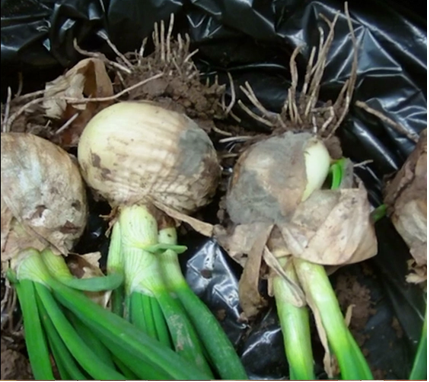
|
|
|
|

|
|||
|
|
|||
|
|
|||
The appearance of fuzzy grayish growth on lettuce or onions usually signals the presence of Botrytis cinerea, the fungus responsible for gray mold. In the desert southwest, gray mold can be a concern for lettuce and onion growers, in addition to anyone who enjoys eating strawberries, as this fungus can rapidly turn them into furry-looking inedible fruit. The plant pathogen flourishes under conditions of high humidity. On onion and lettuce crops, profuse amounts of spores, invisible without magnification, are produced on the gray growth and dispersed in the air. When favorable temperature and humidity levels exist, spores landing on senescing or damaged areas of lettuce and onion plants will germinate and colonize this tissue, then proceed to grow on healthy plant parts, leading to potential plant collapse and death. Disease symptoms on lettuce are similar to those caused by Sclerotinia minor and S. sclerotiorum, the causal agents of lettuce drop. Actually, Botrytis and Sclerotinia are closely related fungal pathogens; however, the visible mycelial growth of Sclerotinia on plants is white rather than the characteristic gray color of Botrytis. Fungicides effective against Sclerotinia are usually active against Botrytis as well. As with Sclerotinia, fungicide applications for management of Botrytis can be beneficial when plants are treated before but not after the appearance of fungal growth and disease symptoms |
|||
| Back | |||
|
For questions or comments on any of the topics please contact Marco Pena at the Yuma Agricultural Center.
|
|||
|
Home |
Cotton
| Veggies |
Forages
| Grains
| Citrus |
Crop x Crop
Insects | Diseases | Weeds | Pesticides | Economics | News | Weather | Research | Photos | Contacts | General Info. Copyright © 2001 University of Arizona, College of Agriculture and Life Sciences Webmaster: Al Fournier (acis@ag.arizona.edu) |
|||

